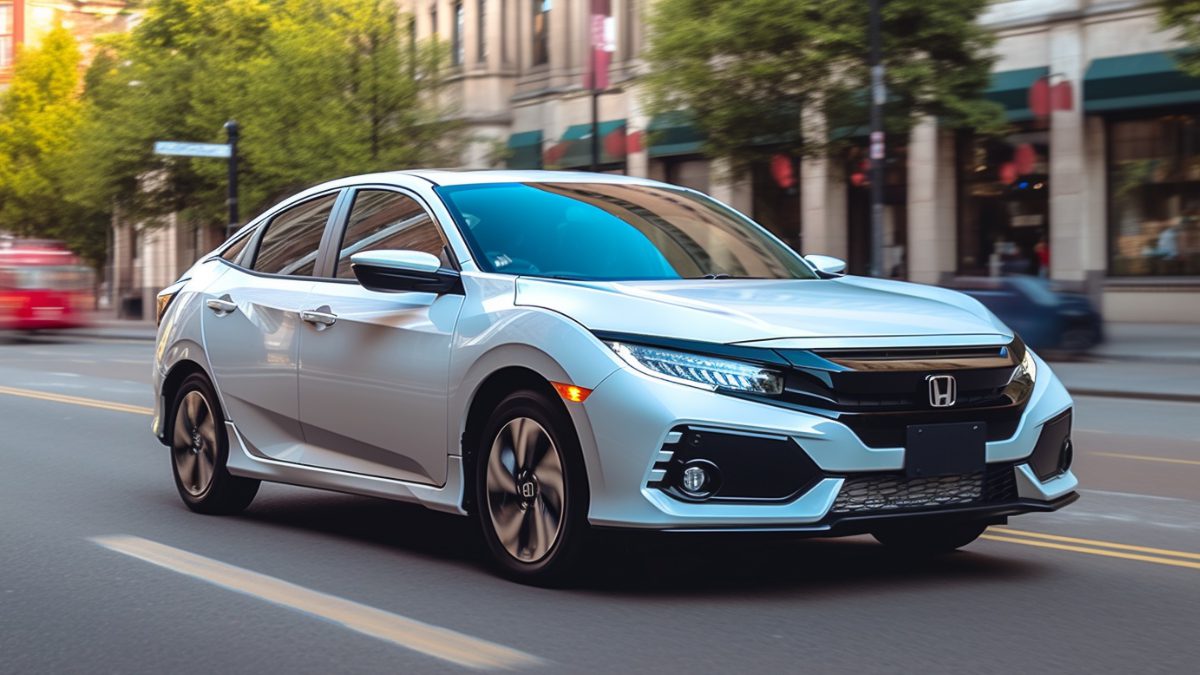Battery Light On But Car Runs Fine – 6 Causes And Fixes
Car batteries are frequently one of those components that we overlook until they cause us problems. When the battery light suddenly appears on the dashboard, that is when we begin to wonder. This situation has become a popular topic of discussion in various car forums.
So, what are the causes of the battery light on but the car runs fine? Some of the causes include:
- A loose or damaged serpentine belt
- A malfunctioning alternator
- A bad ECU
- Battery terminal corrosion
- A bad ground strap
- Wiring or connection issues
Continue reading to learn about each potential cause of this problem. By the end of this article, you should be able to identify, diagnose, and address the specific issue affecting your vehicle.
Causes Of Battery Light On But Car Runs Fine
When you start your vehicle, the battery light may briefly illuminate. This is a completely normal occurrence, and there is no reason to be concerned. However, when the battery light comes on while you’re driving, you should pay close attention.
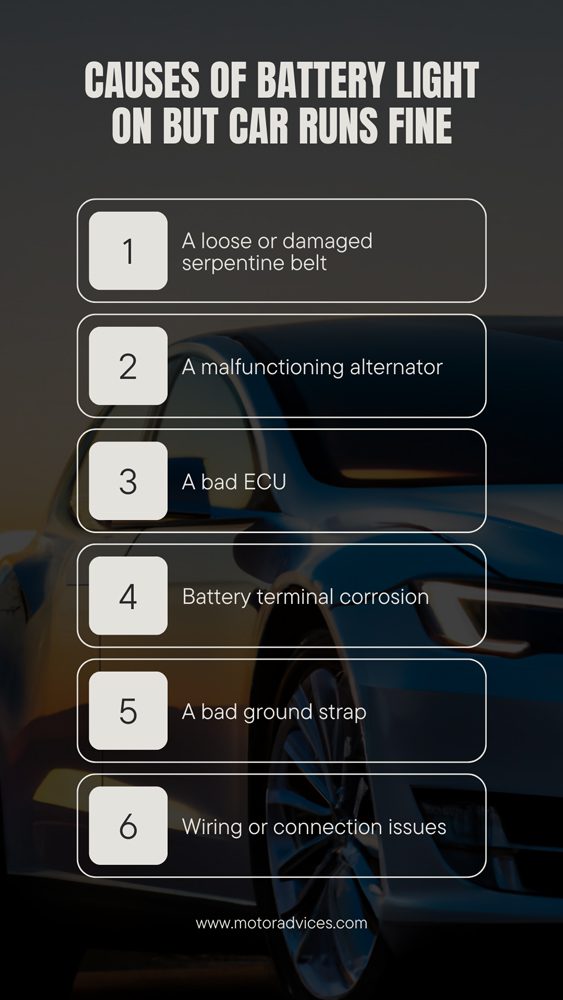
Let’s look at some common symptoms and potential meanings associated with this occurrence.
1. Serpentine Belt Issues
The serpentine belt gets its name from its snake-like appearance and ability to weave its way around various pulleys in the engine. When this belt fails, it can cause a slew of electrical and mechanical problems, including the battery warning light.
Causes of serpentine issues include regular wear and tear and reduced tension.
Symptoms of a Bad Serpentine Belt:
- High-pitched squealing noise during the engine startup.
- Heavy power steering.
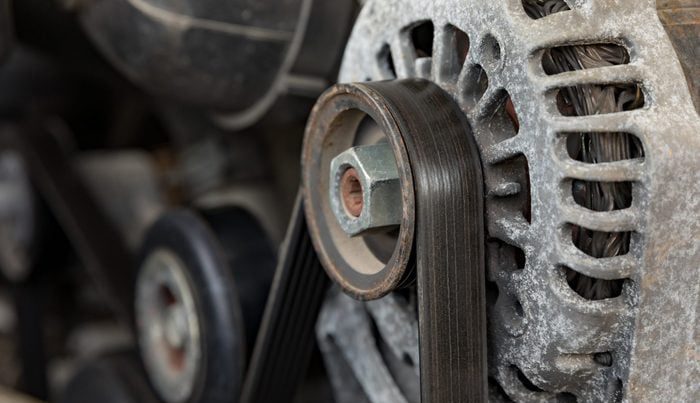
Diagnosis:
Inspect the belt visually. If you notice cracks, fraying, or any signs of damage, it’s a clear indication that the belt needs attention.
The Fix:
If the serpentine belt is damaged or loose beyond repair, it’s time for a replacement.
- Ensure the engine is turned off and disconnect the negative terminal of the battery to prevent any electrical accidents.
- Use the serpentine belt tensioner tool to fit over the tensioner pulley bolt. Rotate the tool counterclockwise to release tension on the belt. This will allow you to remove the old belt easily.
- Follow the routing diagram when threading the new serpentine belt around the pulleys. Leave one pulley, usually the tensioner pulley, for last.
- Use the serpentine belt tensioner tool again to rotate the tensioner counterclockwise.
- Double-check that the belt is properly aligned on all pulleys and grooves. It should not be twisted or misrouted.
Cost Considerations:
On average, you can expect to spend between $50 to $200 for the belt itself, with additional labor costs of $50-$70 if you hire a mechanic for installation.
2. A Malfunctioning Alternator
The alternator is essential to the proper operation of your vehicle’s electrical system. While the engine is running, it generates enough power to recharge the battery and power various components.
If the battery had some charge left, the car might still run fine. However, the car will eventually shut down because the bad alternator is not producing any power. Causes of a bad alternator include:
- Wear and tear
- A faulty voltage regulator
Symptoms of a Bad Alternator:
- Dimming or flickering of headlights and interior lights.
- Grinding or whining noises.
- Rough start, especially when the engine is cold.
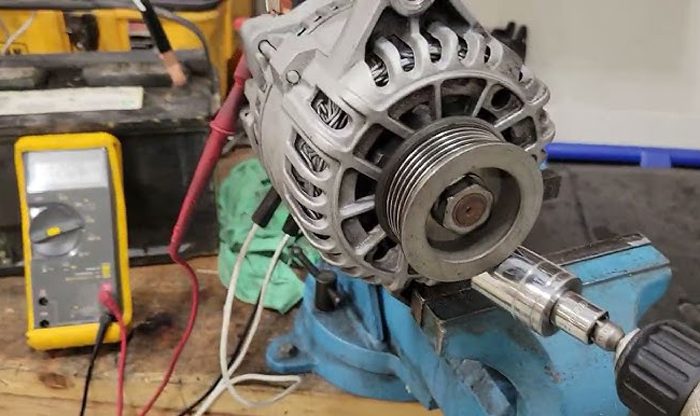
Diagnosis:
You can do this by using a voltmeter to measure the alternator’s output voltage. When the engine is running, the voltage should be around 14 volts. Because most voltage regulators are located within the alternator, replacing a faulty alternator resolves the issue of a bad voltage regulator.
The Fix:
- Loosen and remove the serpentine belt. Then, detach the electrical connectors and unbolt the alternator from its mount.
- Install the new alternator by reversing the steps you took to remove the old alternator.
- Ensure the serpentine belt is correctly routed and tightened to the manufacturer’s specifications.
- Once the new alternator is in place, start your car and check for any warning lights on the dashboard.
Cost Considerations:
A new alternator will typically cost between $100 and $400. Labor costs for professional installation typically range from $100 to $200 or more, depending on your location and the complexity of the job.
3. A Bad ECU
When the battery light illuminates and your car appears to run normally, a bad ECU (Engine Control Unit) could be the culprit. The ECU, also known as the “brain” of your vehicle, manages and controls various engine functions.
Symptoms of a Bad ECU:
- Check engine light
- Stalling or hard-starting
- Erratic idling
- Poor fuel efficiency
- Unresponsive oxygen sensor or throttle position sensor

Diagnosis:
To definitively diagnose a bad ECU, it may need to be tested by a professional technician or with specialized equipment. This usually entails inspecting the unit’s inputs and outputs and its ability to communicate with the vehicle’s other systems.
The Fix:
Once the issue is confirmed, the faulty ECU needs to be replaced. This is best done by a professional mechanic. The mechanic will remove the old ECU and install the new one. In many cases, the new ECU will need to be programmed to work with your vehicle’s specific settings.
Cost Associated:
The cost of a new ECU ranges from $400 to $1,500. For labor costs, expect to pay anywhere from $100 to $300.
4. Battery Terminal Corrosion
Battery terminal corrosion occurs when a white or greenish-blue substance accumulates on the battery terminals. This impedes the flow of electricity between the battery and your vehicle’s electrical system.
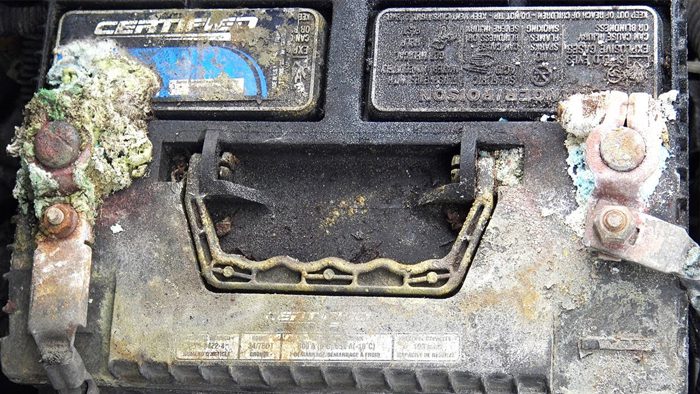
The Fix:
- Begin by disconnecting the negative (black) cable from the battery terminal.
- Clean the corrosion from the terminals and cable ends with a battery terminal brush or a solution of baking soda and water. Scrub gently but thoroughly until the terminals are clean and shiny.
- After cleaning, remove any remaining baking soda residue using a sponge. Ensure that the terminals are completely dry before proceeding to the next step.
- Reconnect the cables to the battery terminals and tighten the clamps securely. Check for a snug connection without overtightening.
- To prevent future corrosion, apply a terminal protector spray or a thin layer of petroleum jelly to the battery terminals. This will form a barrier that will help prevent corrosion.
Cost Associated:
Battery terminal protector sprays typically cost around $5 to $10.
5. A Bad Ground Strap
A bad ground strap is one of the often overlooked culprits behind this issue. The ground strap, also known as a ground cable or ground wire, plays a crucial role in ensuring proper electrical conductivity between various components in your vehicle.
Symptoms of a Bad Ground Strap:
- Dimming headlights or interior lights.
- Erratic behavior of various electrical components such as the radio, power locks, or dashboard lights.
- Intermittent starting problems or slow cranking.
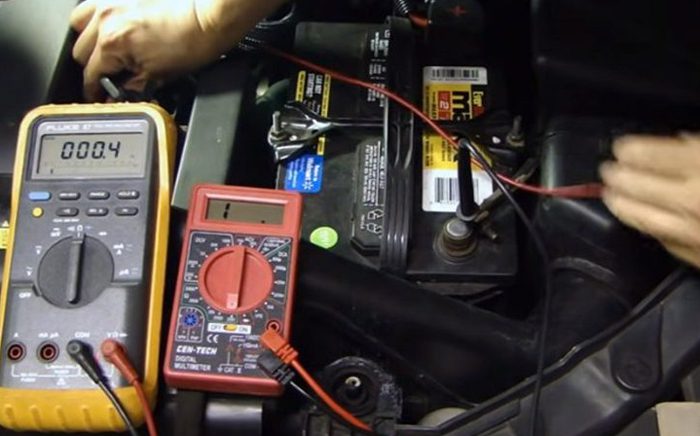
Diagnosis:
To begin, visually inspect the ground strap. Look for signs of corrosion, wear, or loose connections. Pay close attention to where the strap connects to the engine block and the chassis.
The Fix:
- If you notice corrosion on the strap or connections, clean them thoroughly using a wire brush or sandpaper. Ensure that both the strap and the attachment points are free from any debris or oxidation.
- If the strap appears loose, securely tighten it to ensure a proper connection. If damaged, replace it. Ensure all bolts and fasteners are snug but not overtightened.
6. Faulty Wiring
The wiring in your vehicle acts as an intricate network that connects various electrical components and ensures they work properly. When wiring is damaged or compromised, it causes a disruption in the electrical system. Causes of faulty wiring:
- Over time, the insulation covering wires can deteriorate due to heat, vibration, and moisture exposure.
- Physical damage to your vehicle, such as accidents or even minor impacts, can damage wiring harnesses, connectors, or individual wires.
- Surprisingly, rodents like mice and squirrels may chew through wiring in your car, leading to shorts and connectivity issues.
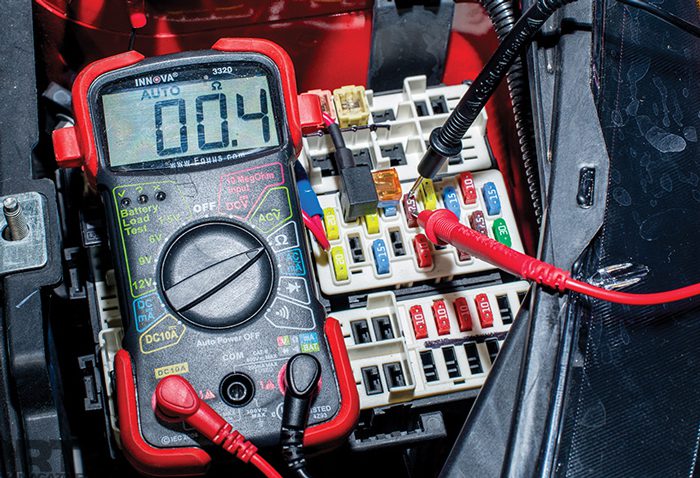
Symptoms of Faulty Wiring:
- Flickering lights, malfunctioning accessories, or an erratic dashboard.
- Check engine light.
- Unusual odors like burning or melting plastic
- Excessive battery drain
Diagnosis:
Visually inspect the wiring harnesses and individual wires throughout your vehicle. Look for any visible signs of damage, exposed wires, or loose connections.
The Fix:
If you identify damaged wiring, you have two options:
- Repair: You can attempt to repair the damaged section by splicing in new wires, using soldering techniques and heat-shrink tubing to insulate the connection.
- Replace: In cases of severe damage or extensive wear, it may be more practical to replace the entire wiring harness or the affected part of it.
Cost Considerations:
If you repair a small section of wiring yourself, the cost of materials is usually less than $50. If you need the expertise of a mechanic, labor costs range from $100 to $200 per hour, depending on the job’s complexity and local rates. The cost of replacing an entire wiring harness, including labor, can reach up to $1,500.
If you’re experiencing the issue of the battery light being on but your car runs fine, it’s essential to understand the potential causes and solutions. However, if you’re concerned about how long you can drive with the battery light on, our article on how long can you drive with the battery light on can provide valuable guidance. Additionally, if you’ve encountered a situation where your car dies while driving and the battery light comes on, you can refer to our article on car dies while driving battery light comes on to understand the possible reasons and actions to take.FAQs
Here are other related questions related to the topic of “Battery Light On But Car Runs Fine.”
Driving with the battery light on for an extended period is not recommended. While your car may run fine for a short time, the underlying problem may worsen, potentially leading to a breakdown. To avoid further damage, it’s best to address the issue as soon as possible.
Repairing faulty wiring can be complicated and may necessitate the use of electrical expertise. Some DIY enthusiasts can handle simple repairs like splicing and insulating wires. However, more complex wiring issues or those involving safety systems should be left to professionals.
Resetting the battery light on your dashboard usually entails addressing the underlying issue that triggered the warning light in the first place. If the light does not turn off after addressing the issue, you can reset it with an OBD-II scanner.
As a last resort, disconnect the negative (black) terminal of the battery for a few minutes and then reconnect it. This can sometimes reset the warning light, but keep in mind that it may also reset other vehicle settings, such as radio presets and clock settings.
Conclusion
We investigated a number of potential causes for this problem. Understanding the causes allows you to approach the problem systematically and take appropriate action to keep your vehicle reliable and safe.
Remember that paying attention to warning signs like the battery light on time can save you from more extensive and costly repairs in the future.
The article has provided detailed step-by-step guides to assist you in determining the potential causes of this problem. Finally, a well-maintained vehicle not only ensures your safety on the road but also extends the life of your automobile.

